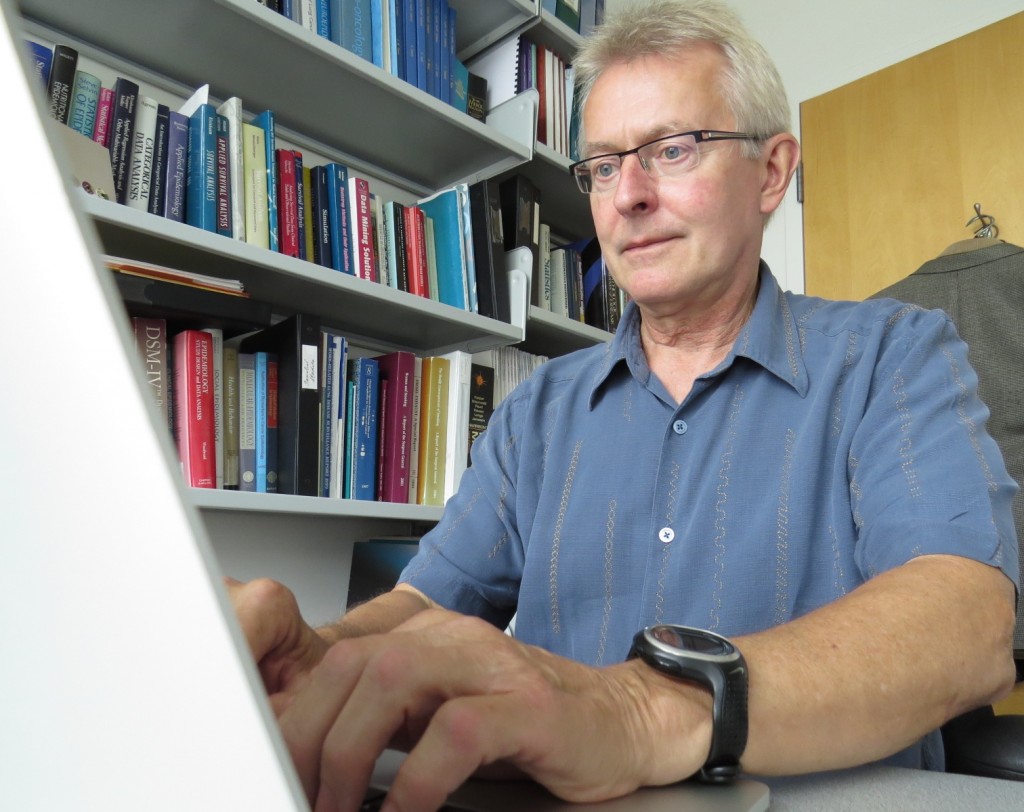A Brock University epidemiologist has created risk calculation software that can reduce surgical procedures by helping doctors know if nodules showing up on CT lung scans have a high probability of being cancerous.
Martin Tammemagi developed the model as part of a team of Canadian scientists whose findings appear today in the New England Journal of Medicine. Tammemagi is the second author on their paper, “Probability of Cancer in Pulmonary Nodules Detected on First Screening Computed Tomography”.
“One of the goals of the model is to help reduce the number of needless tests,” said Tammemagi. “When we can identify with accuracy that a person’s nodule has low probability for lung cancer, then they’ll receive follow-ups that include fewer CT screens, less biopsies and less surgery. That will help minimize needless risk to the individual and needless suffering.”
Colleague Dr. John Goffin, associate professor of Oncology in the Michael G. DeGroote School of Medicine at McMaster University, explored the challenges that these scans present to medical oncologists, and how the new software will help.
“CT screening studies have used various criteria to define a ‘positive’ nodule which, in turn, leads to variable clinical testing. The nodule risk calculator will help to bring order to this chaos and provide clinicians with a rational, probabilistic guide to care.”
When a nodule shows up on a CT scan, clinicians or radiologists will enter its details into Tammemagi’s model, including: size; location (upper or lower chest); whether the nodule is solid, semi-solid or looks like ground glass.
Additional data – age, gender, family history, history of lung cancer, history of emphysema – are entered onto the spreadsheet, which then calculates the probability of the nodule being cancerous.
According to the U.S. National Lung Screening Trial, screening with the use of low-dose CT cuts mortality from lung cancer by 20 per cent. Nodules will show up on CT scans in around 25 per cent of people at high risk of lung cancer (current or former smokers, older). Some 98 per cent of nodules are benign.
This is Tammemagi’s second cancer-detecting model. At the beginning of this year, he published another model predicting the likelihood that an individual will develop lung cancer in the next six years. This model was accompanied by a risk calculator housed on the Brock University’s Lung Cancer Risk Calculator site. This research was published Feb. 21 also in the New England Journal of Medicine.
“My first model helps identify who you need to screen,” says Tammemagi. “Once you’ve screened them and you find that they have nodules, the next model tells what to do with the nodule, how to properly handle the situation.”
Since its release in February, the Lung Cancer Risk Calculator has been downloaded more than 619 times from more than 40 countries in every area of the world. There are usually several downloads a day, with the numbers spiking following media reports about the research.
Globally, lung cancer is the leading cause of cancer deaths accounting for 1.4 million deaths annually.
According to the Canadian Cancer Society, lung cancer is the second-most commonly diagnosed cancer in Canada and the leading cause of death from cancer for both men and women.
The organization estimates that, on average, 70 Canadians will be diagnosed with lung cancer every day, with an average of 55 Canadians dying from lung cancer every day.












